qPCRBIO Probe Blue Mix is a universal probe kit that includes a non-reactive blue dye for easy sample visualisation and enhanced pipetting accuracy.
Description
Whether your application is for a singleplex or multiplex expression study or a diagnostic assay, qPCRBIO Probe Blue Mix is the robust choice for all your probe-based real-time PCR needs.
The universal probe kit is designed to give superior sensitivity and specificity in all probe-based real-time PCR assays, including TaqMan®, Scorpions®, and molecular beacon probes. qPCRBIO Probe Blue Mix contains a non-reactive dye to improve reaction mix visibility and is particularly useful in reducing pipetting errors when loading small volume reactions or using white plates.
- Easy-to-see blue mix for greater pipetting precision
- High efficiency in multiplex reactions
- Rapid extension rate for early Ct values
- Market leading sensitivity – increased limit of detection
- Efficient amplification from GC and AT-rich sequences
- Antibody-mediated hot start technology
- Compatible on all real-time PCR platforms – standard and fast cycling conditions
By combining antibody-mediated hot start technology with the latest advances in buffer chemistry we offer market-leading performance with minimal or no optimisation required. qPCRBIO Probe Mix can be used to reliably detect extremely low copy number targets and quantify any DNA template including genomic, cDNA and viral sequences. The enhanced sensitivity of qPCRBIO Probe Blue Mix makes it the perfect choice for multiplexing.
Applications
- Absolute quantification
- Relative gene expression analysis
- TaqMan®, Scorpions® and molecular beacon probes
- Detection of extremely low copy number targets
- Diagnostic real-time PCR
Use our qPCR Selection Tool to find out which ROX variant is compatible with your instrument.
Storage
The kit should be stored between -30°C and -15°C. Avoid prolonged exposure to light. If stored correctly the kit will retain full activity for 12 months. The kit can be stored at 4°C for 1 month. The kit can go through 30 freeze/thaw cycles with no loss of activity.
Experiment 1
qPCRBIO Probe Blue Mix
a=Singleplex b=Quadplex
Experiment 2
Invitrogen EXPRESS
a=Singleplex b=Quadplex
Experiment 3
Biorad Ssofast Probe Mix
a=Singleplex b=Quadplex
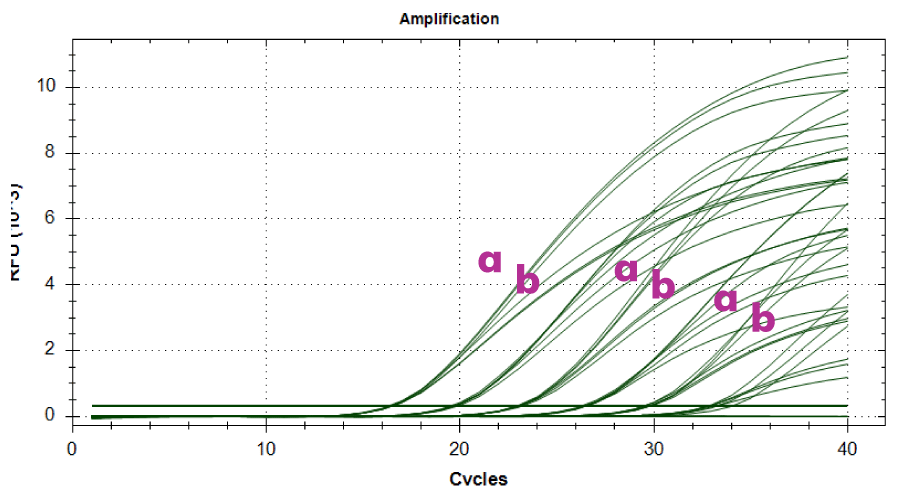
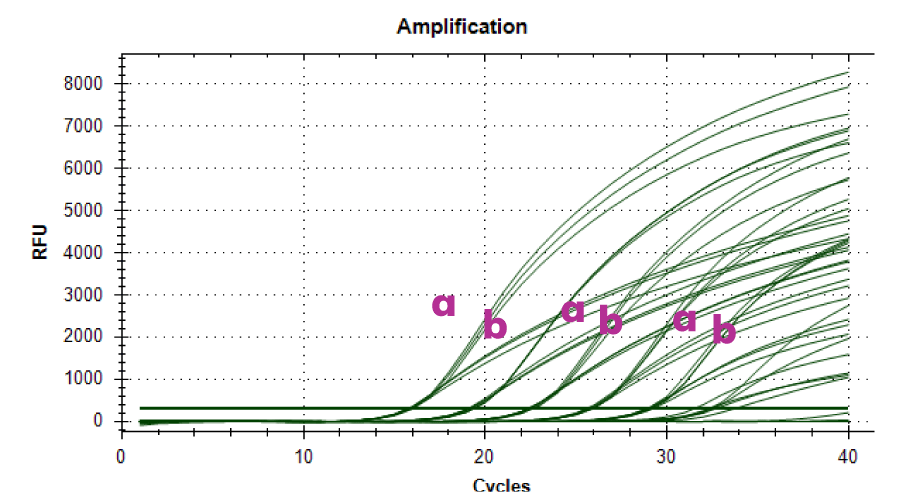
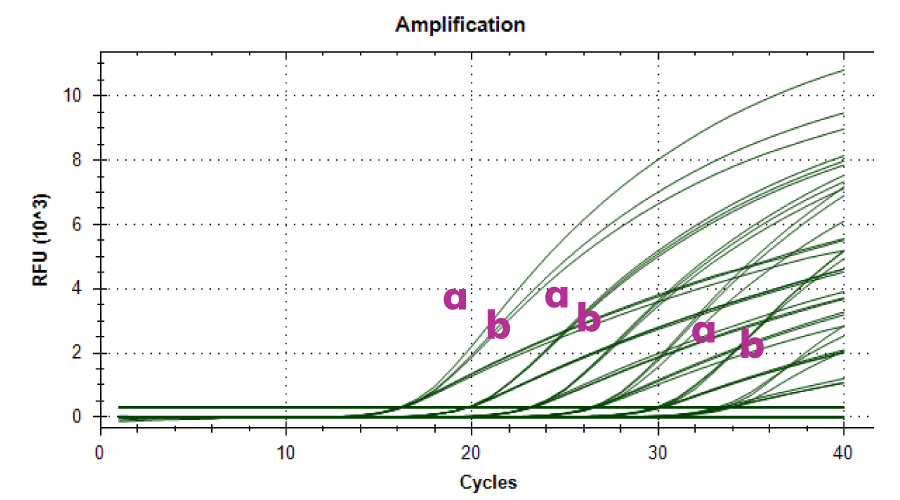
Experiment 4
qPCRBIO Probe Blue Mix
a=Singleplex b=Quadplex
Experiment 5
Invitrogen EXPRESS
a=Singleplex b=Quadplex
Experiment 6
Biorad Ssofast Probe Mix
a=Singleplex b=Quadplex
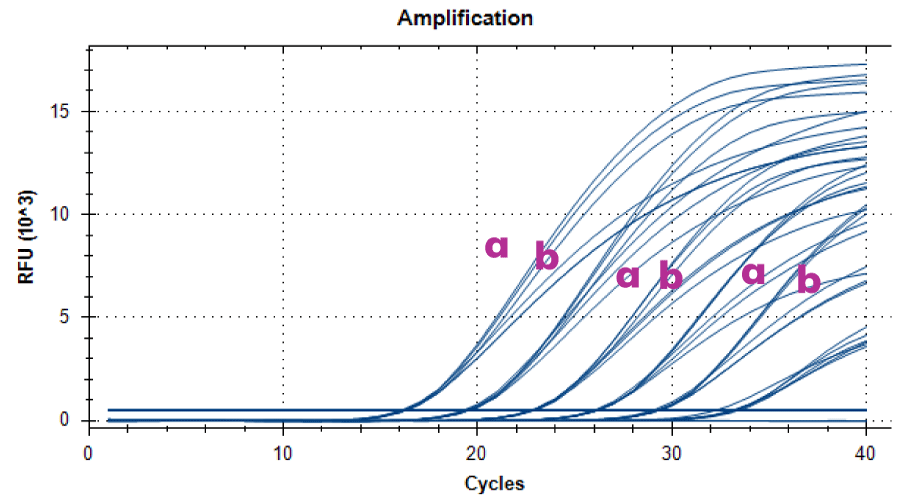
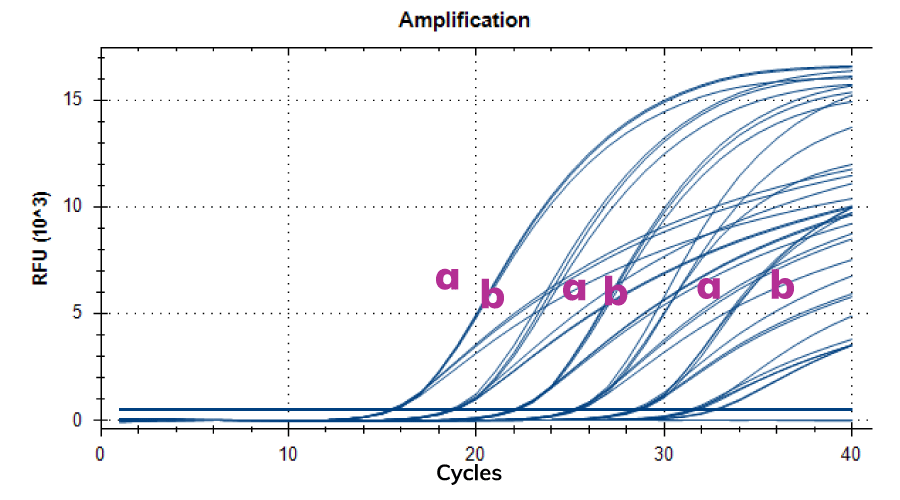
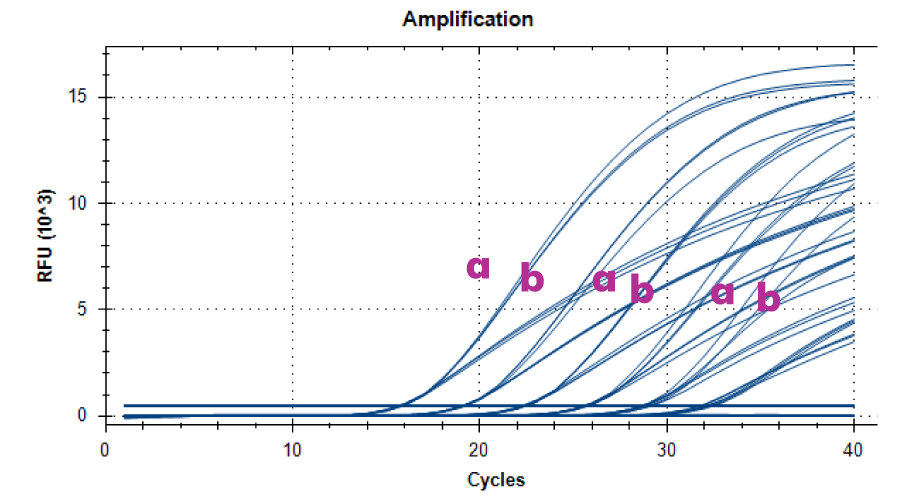
Experiment 7
qPCRBIO Probe Blue Mix Singleplex sensitivity test ACVR2B
Experiment 8
qPCRBIO Probe Blue Mix Singleplex sensitivity test LIMK1
Experiment 9
qPCRBIO Probe Blue Mix Singleplex sensitivity test ACVR1B
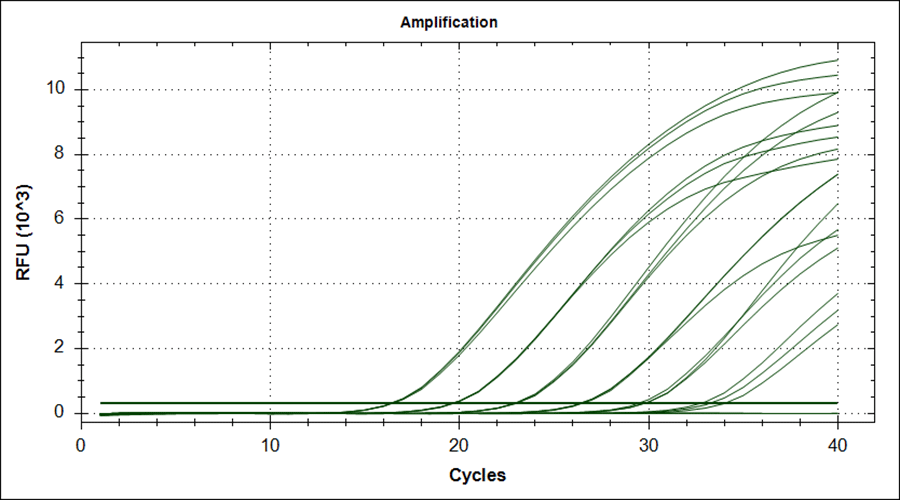
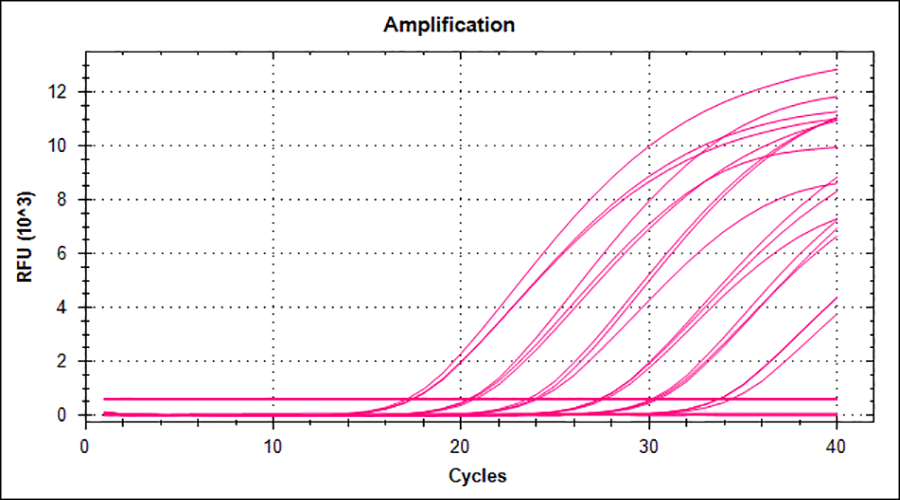
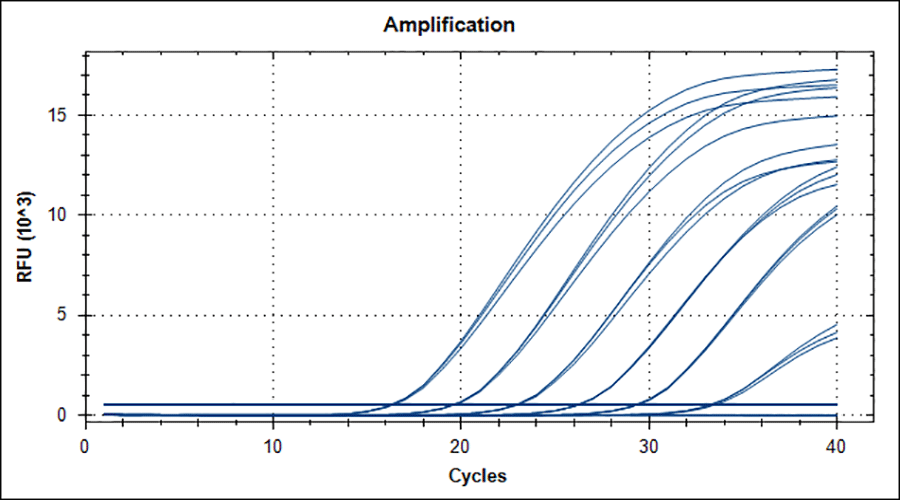
Figure 1
Experiments 1, 2 and 3 show TaqMan probe amplification traces of human gene ACVR2B in singleplex and in quadplex (ACVR2B, LIMK1, ACVR1B and CDK7) from a cDNA dilution series. a) traces indicate singleplex reactions, b) traces indicate quadplex reactions. qPCRBIO Probe Blue Mix was tested against the latest competitor mixes from Invitrogen (experiment 2) and Biorad (experiment 3). qPCRBIO Probe Blue Mix shows the least PCR inhibition when in multiplex compared to Invitrogen and Biorad mixes. This is evident in more delayed amplification traces in quadplex (b) compared to singleplex (a). Experiments 4, 5 and 6 show TaqMan probe amplification traces of human gene LIMK1 in singleplex and quadplex (ACVR2B, LIMK1, ACVR1B and CDK7). As with experiments 1, 2 and 3, LIMK1 amplification is less inhibited in multiplex in the PCR Biosystems probe mix than the competitor mixes tested. Cycling conditions were 95°C 2min, 40 cycles of 95°C 10sec, 60°C 15sec on Biorad CFX instrument.
Experiments 7, 8 and 9 show TaqMan probe amplification traces from plasmid dilution series of 1×106 copies to 10 copies of DNA. For each gene qPCRBIO Probe Blue Mix amplified with 100% efficiency and detected 10 copies of DNA.
FAQs ROX
ROX (6-carboxy-X-rhodamine) is used as a passive reference dye in ROX-dependent real-time PCR instruments to normalize for variations of fluorescence levels that can arise mainly due to optical path variations among wells. Normalisation of the fluorescence intensity (Rn) is done in real-time PCR software by dividing the emission intensity of the specific signal by the emission intensity of ROX.
ROX does not take part in the PCR reaction and its fluorescence levels are not proportional to the quantity of DNA in each well, so the addition of this fluorophore to a mix provides a constant fluorescent signal during amplification.
Different types of real-time PCR instruments requiring a passive reference standard have different optimal concentrations of ROX, mainly due to the different optical configurations of each system (i.e. the different type of excitation source and optics used).
The addition of either too little or too much ROX would result in a very noisy signal impacting on the results of the reaction. Therefore, it is extremely important for the user to:
- Determine the correct ROX concentration to optimise real-time PCR results, and
- Check the ROX settings on the software used to set up the reaction
ROX concentrations in qPCRBIO Probe Blue Mixes:
The qPCRBIO Probe Blue Mixes that contain passive reference dyes come in different formulations, each with a different concentration of the passive reference dye:
- qPCRBIO Probe Blue Mix Lo-ROX (PB20.25) contains 112 nM ROX
- qPCRBIO Probe Blue Mix Hi-ROX (PB20.26) contains 1.12 µM ROX
- PCRBIO Probe Blue Mix Separate-ROX (PB20.27) 2x mix contains no ROX and include a separate tube of 50 µM ROX additive. This enables you to choose what concentration of ROX you’d like to use.
Available sizes:
| PB20.25-01 | 100 x 20μL Reactions |
| PB20.25-05 | 500 x 20μL Reactions |
| PB20.25-20 | 2000 x 20μL Reactions |
| PB20.25-50 | 5000 x 20μL Reactions (1 x 50mL bottle) |
| PB20.25-51 | 5000 x 20μL Reactions (50 x 1mL in Pouch) |
